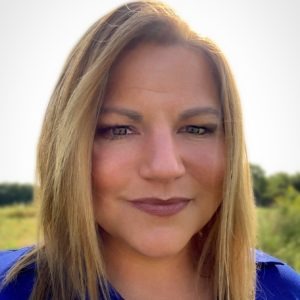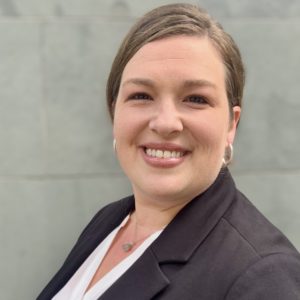How the Senior Care Industry Can Restore Trust and Increase Occupancy

Annie Haarmann, Head of Strategy and Consulting, Healthcare and Life Sciences, Reputation
The COVID-19 pandemic has created enormous pressure on the country’s health care system, with the senior care industry especially impacted by nursing staff shortages, caregiver burnout, and public mistrust of safety measures.
Occupancy rates at independent living and assisted living communities are at record lows, with occupancy at skilled nursing facilities at just 71.7 percent in December 2020. With the Delta variant causing soaring hospitalizations of the unvaccinated and breakthrough infections of vaccinated individuals, can industry leaders reverse these troubling numbers and allay consumer fears?
Annie Haarmann, Head of Strategy and Consulting, Healthcare and Life Sciences, at Reputation; Samantha Prinster, Vice President of Marketing and Communications at Cedarhurst Senior Living; and Chris Harper, Vice President of Communications at The Arbor Company recently discussed how improving their companies’ reputations has led to higher visibility and more conversions.
These three thought leaders shared their insights and strategies to rebuild trust with residents and families, increase occupancy levels, and leverage technology to increase resident safety and engagement in the I Advance Senior Care webinar, “Rebuilding the Senior Care Industry: How to Increase Occupancy and Restore Trust” sponsored by Reputation.
The Importance of Experience Management
“The resurgence of COVID cases due to the Delta variant is bringing back a lot of uncertainty when the industry is trying to rebound, which is a big challenge,” says Annie Haarmann. “COVID fatigue and caregiver burnout are really affecting our ability to keep skilled nursing facilities staffed, and to keep caregivers from leaving for other industries.
“This will continue to impact recruitment and retention in our facilities, and we need to understand how to improve that experience. Experience management is really important right now as seniors look at all of the different options they have for care, whether they’re going to stay at home, move in with a family member, or move into a senior living community.”
Haarmann notes that senior living is the only industry where the consumer experience goes beyond the clinical and is 24 hours a day, 7 days a week. Moreover, savvy consumers are doing their homework when it comes to due diligence.
“Caregivers, family members, and residents themselves do a lot of research on senior living options, so ratings and reviews are important. In fact, more than 80 percent of consumers trust online ratings and reviews as much as a recommendation from a friend of family member. We need to be aware of what our reputation is, not just in the community at large, but online specifically.”
Improving Visibility and Restoring Trust
Haarmann suggests thinking about reputation and experience management as a complete program to restore trust.
“It means bringing together sales and marketing and consumer experience teams and concepts,” she says. “Once consumers have accessed your care, start collecting and highlighting feedback from satisfied residents and their family members, as well as the employees within your communities. This will increase future conversions.”
Sales and Marketing: A Unified Front

Samantha Prinster, Vice President of Marketing and Communications, Cedarhurst Senior Living
Cedarhurst Senior Living operates 54 communities in 9 states, offering independent living, assisted living, memory care, and supportive living.
“Our organization has identified that the connection between sales and marketing is imperative to our success,” states Samantha Prinster. “So, we created a sales enablement role. The individual in this position is responsible for working closely with marketing and understanding everything we create and how we’re communicating, and then training our sales team in the community.
“Everyone can review the data collected by marketing and the data collected by sales, making us operate as one unit. The connection allows us to continuously look for ways to streamline and remove complications.”
Using Technology to Scale Marketing Efforts

Chris Harper, Vice President of Communications, The Arbor Company
The Arbor Company has been in business for more than 30 years and operates 45 communities in 11 states.
“One of the tools we’ve implemented is an online store in which sales counselors in the individual communities can use templates we’ve created to send out a flyer, emails or messages via social media that don’t always have to go through an approval process,” Chris Harper states. “We’re building a marketing stack from the marketing automation tools that we use all the way through to tools that the sales team can use. It’s sales enablement: enabling the team to self-serve and get the tools they need in the moment.”
More and more, the consumer journey happens online.
“Your digital presence entry point has shifted from your branded website to your entire online presence, particularly on Google My Business,” states Haarmann. “The better optimized your Google presence, the more likely you are to stand out versus your competition. Google prioritizes listings that have a lot of feedback, and people searching for a care community are looking at ratings and reviews. It’s really important to have a good volume of reviews and respond to them.”
“We’re helping prospects be as informed as possible, before they even enter our doors,” states Prinster. “Our goals in marketing and communication are to understand and improve our resident experience, provide transparency and up-to-date information on Google My Business, and enhance our presence regionally.”
Prinster adds that prior to the pandemic, they developed a review acquisition program and supplied each community with review kits. “Our communities strive for review scores, and they’re empowered and excited about their online reputation.”
Driving Online Traffic and Earning Local Trust
Harper states that moving from separate websites for each Arbor Company community to one website made a big difference in online traffic.
“We’ve really doubled down on our digital focus. We revamped all of our Google and Facebook advertising and are improving our online visibility by having correct and consistent data,” Harper states. “We also tailor our approach within each brand. With 45 communities in 11 states, we rely on the local teams who are the experts in their market, and we use Reputation’s tools to see where we stand against key competitors.”
The Arbor Company is an example of how improving reputation leads to higher visibility and more conversions, and empowering the team gets results.
“Our response rate to reviews is high, and while it wasn’t as much of a focus two or three years ago, it is now,” states Harper. “Our goal is to respond to every single review as quickly as possible.”
A Reason for Optimism
While the pandemic took a toll on the senior living industry, the lessons learned will prepare organizations going forward.
“There was no playbook for the pandemic, but now we know much more, and we know how to operate,” states Harper. “We’re in the second half of 2021 now and we’re more set up for success, having gone through the hardships of 2020.”

Marlene Kurban is a freelance writer with more than 20 years of experience in nonprofit management and the behavioral health care field.
Related Articles
Topics: Activities , Administration , Business Marketing Including Social Media and CRM , Facility management , Featured Articles , Leadership , Resident Care , Technology & IT , Training


![Rebuilding the Senior Care Industry: How to Increase Occupancy and Restore Trust [Webinar]](https://www.iadvanceseniorcare.com/wp-content/uploads/2021/09/Rebuilding-the-Senior-Care-Industry.jpg)








